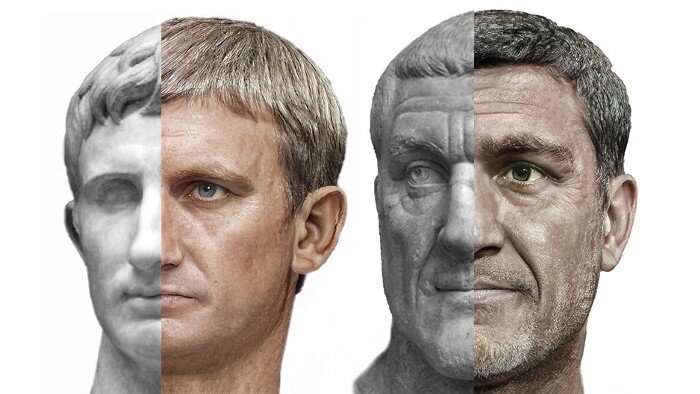September 29, 2020 report
VR specialist in the movie industry passes time by creating photorealistic images of Roman emperors

Daniel Voshart, a CG specialist in Hollywood who normally works on creating special effects sequences for movies, has been spending his pandemic downtime using his skills to create photorealistic images of Roman emperors. Voshart describes his work in an article on the online publishing platform Medium.
To create his photoreal portraits, as he calls them, Voshart used a combination of Photoshop, Artbreeder and historical references. He describes his work as restoring or transforming busts of 54 of the Roman emperors from the Principate, which extended from 27 BC to 285 AD. He further explains that the technology behind Artbreeder is a machine-learning algorithm. It allowed Voshart to use multiple sources for each of his projects—busts, drawings and coin images. Artbreeder was trained on these art samples and then created a photorealistic image based on the analysis. Voshart then used Photoshop to make any adjustments he felt were necessary to capture the true likeness of each of his subjects.
Voshart notes that artistic interpretations, by their very nature, involve showcasing characteristics that a given artist finds important. Thus, different busts of the same emperor can look quite different. To overcome such biases, he fed Artbreeder as many samples of each emperor as he could find. He also tried to capture them as they would have looked prior to illnesses or other events that might have led to changes in their appearance. And to reduce the romanticized biases introduced into work by artists attempting to please a given emperor, Voshart favored those that showed an emperor at his ugliest. He also favored work that showed the best craftsmanship. He notes that in some cases, there were no surviving busts of an emperor. In such cases, he used images on coins, family trees (brothers that were believed to bear a resemblance, etc.) or other materials. In some cases, he admits that he relied on his own ideas of what a subject may have looked like. Voshart has made his work available for download as a print file of the final results of his efforts in several languages.
More information: Photoreal Roman emperor project: medium.com/@voshart/photoreal- … project-236be7f06c8f
Artbreeder: www.artbreeder.com/
© 2020 Science X Network

















